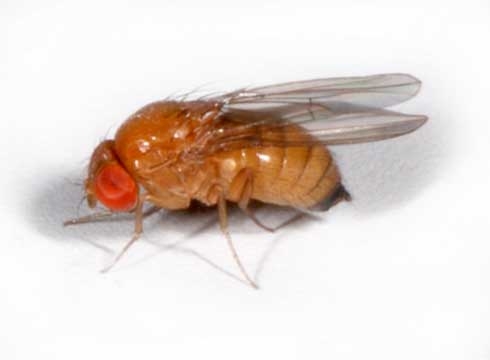Advice from the Help Desk of the
UC Master Gardener Program of Contra Costa

Help Desk Response: The spotted wing drosophila (Drosophila suzukii) is a relatively new pest of cherries and other soft fleshy fruits (strawberries, raspberries, blackberries, blueberries, etc). Unlike other vinegar flies that attack rotting or fermenting fruit, the spotted wing attacks maturing fruit. The name spotted wing drosophila comes from the single black spot at the tip of each wing of the male adult. Don't think though that you will be able to identify this fly by those markings without magnification because these adults are small, really small. The female is able to penetrate the skin of the fruit to lay her eggs and this act creates a small depression (“sting”) on the fruit surface. The eggs hatch and the maggots develop and feed inside the fruit, causing the flesh of the fruit to turn brown and soft.

An alternative to malathion with fewer negative environmental effects would be spinosad (e.g., Monterey Garden Insect Spray and see http://www.ipm.ucdavis.edu/TOOLS/PNAI/pnaishow.php?id=65); h
Since spotted wing drosophila attacks ripening fruit it is often not noticed in home garden situations until the fruit is being harvested. Sprays at this time will not protect the crop because maggots are already in the fruit. If only some of the fruit are infested, you can salvage some of the crop by harvesting immediately and sorting the fruit, removing any with “stings” on the surface. It is recommended that all infested fruit be removed from the tree and picked up from the ground. It should then be placed in a sealed plastic bag and disposed of in the trash or buried. Do not put the infested fruit in your compost pile as it may not get hot enough to destroy the eggs and larvae still in the fruit.
*****************************************
This blog was originally written by Emma Connery, Retired Master Gardener Program Coordinator, for publication in the Contra Costa Times April 2, 2011. Slight changes have been made to the original for this blog and are the full responsibility of the blog editor.
*****************************************
Help Desk of the UC Master Gardener Program of Contra Costa County
Come to the UC MGCC Program's Great Tomato Plant Sale
Walnut Creek 4/2&9, Richmond 4/9, and Antioch 4/16
Click for locations and plant lists!
Dozens of heirloom tomatoes & vegetables chosen especially for Contra Costa
Note: The UC Master Gardeners Program of Contra Costa's Help Desk is available year-round to answer your gardening questions. Except for a few holidays, we're open every week, Monday through Thursday for walk-ins from 9:00 am to Noon at 75 Santa Barbara Road, 2d Floor, Pleasant Hill, CA 94523. We can also be reached via telephone: (925) 646-6586, email: ccmg@ucanr.edu, or on the web at http://ccmg.ucanr.edu/Ask_Us/ MGCC Blogs can be found at http://ccmg.ucanr.edu/HortCoCo/ You can also subscribe to the Blog (//ucanr.edu/blogs/CCMGBlog/).